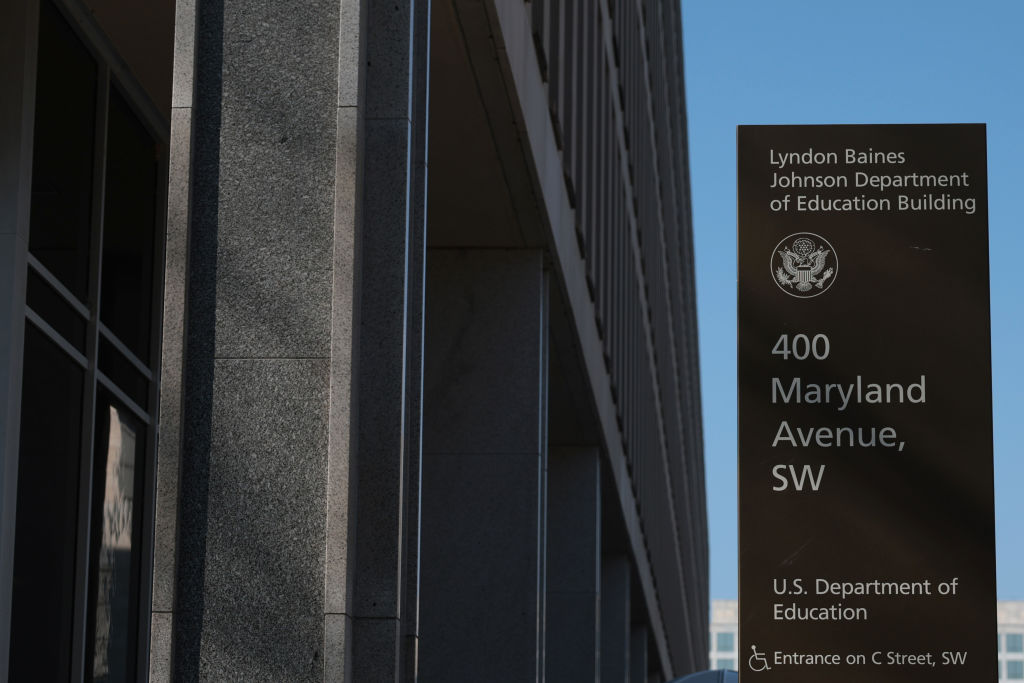
Donald Trump has moved swiftly to overhaul the government in his first month in office. Now, the Department of Education remains in flux. Reports indicate that Elon’s Musk’s “Department of Government Efficiency” (DOGE) has begun investigating the Department of Education, looking to slash education spending.
[time-brightcove not-tgx=”true”]
Such reports reinforce a policy priority from Project 2025, proposed by the Heritage Foundation, which boldly suggested that the federal Department of Education should be eliminated. Why has support for federal education become such a political target?
The Department of Education was created primarily to distribute funding—particularly for disadvantaged students—and enforce civil rights laws in schools. Over the years, it has also created a more reliable and universal system of federal education that has delivered increased access to higher education for low-income students and continuously provides significant funds for economically disadvantaged students and students with disabilities.
Read More: A Brief History of Efforts to End the Department of Education
In 1867, President Andrew Johnson signed the first official Department of Education into law. Although it was not a cabinet level position, it aimed to collect educational data and statistics that would “show the condition and progress of education” in several states and territories. Many people in the post-Civil War South were hesitant about any federal organization involvement—especially the newly formed Department of Education, which dedicated efforts to educate formerly enslaved people. Johnson didn’t advocate for the department’s creation; he had been told the department would “yield little power” and largely serve as an “empty gesture” to appease the Republicans asking for it.
During this time, just 10% of enslaved people were literate, and the radical Republican-backed Department of Education sought to inspire school building and universal education for all children, especially in the South. And yet, many protested that its creation would overpower local control of schools. Historian Jonathan Zimmerman noted that the “critics weren’t wrong when they said that up until that point, the federal government had almost no involvement in education whatsoever.”
And so, Congress voted quickly demote it to an “Office of Education” after its first year in 1868—largely due to Southerners’ fear that the department would track compliance of requirements to establish schools for both white and black students. Over the next century, the small office moved in and out of several different agencies including the former U.S. Department of Health Education and Welfare and the U.S. Department of the Interior. The “Office of Education” principally played an information-gathering role, as originally planned, and education remained firmly a state and local priority.
During the 1950s, fueled by ongoing Cold War tensions with the Soviet Union and the Space Race, political and social momentum grew in favor of increased funding and expansion of the public education system—particularly for science programs. While previously there had been strong pushback, especially from conservatives, to federal education aid, public opinion and fear demanded government action to compete with the Soviets in the Space Race. In 1958, the National Defense Education Act (NDEA) gained bipartisan support to fund higher education institutions, provide funds for low-cost student loans, and help expand libraries and university access for all students. From 1960 to 1970, college enrollment skyrocketed from 3.6 million to 7.5 million thanks to the availability of NDEA loans.
Responses to federal education involvement during the Cold War demonstrated a significant shift in the value of public education in the United States. Alongside patriotic themes and lessons on morality emerging in schools beginning in the 1950s, the public school began to be viewed as an investment on which the government and public could later yield returns. Federal funding of education could, it seemed, pay off in the long run by providing a more patriotic, intelligent, competitive population to compete within the rapidly globalizing world.
As public perception of federal education involvement continued to gain favor, additional pieces of legislation in the 1960s and 1970s paved the path for a formal Department of Education: The Elementary and Secondary Education Act (1965), Higher Education Act (1965) Rehabilitation Act (1973), and the Individuals with Disabilities Education Act (1975).
Expanding federal education support began to be a bipartisan political priority. In 1976, President Carter was elected on a campaign promise to increase education access and even pledged to create an education department in exchange for the National Education Association’s (NEA) endorsement. As a former school board member himself, education policy investment was central to his messaging. In 1979, Congress passed the Department of Education Organization Act to place all the separate educational aims under one big, department umbrella.
The Republican Party mentioned education 31 times in their 1980 Republican Platform, signifying the immediate concern of education policy and a shift towards bipartisan focus on schooling issues. Declaring education a “pillar of a free society,” the party called for dedicated educational support for Hispanic Americans and increased opportunities for “the handicapped, the disadvantaged, and other needy students” attending both private and public schools. Although the Republican Party called for a reduction in federal taxation for education, the aim was still to provide substantial support at the national level.
Although Ronald Reagan campaigned on the issue of abolishing the Department of Education and even mentioned it in his 1982 State of the Union Speech, he used the department to advance his agenda as president. Reagan used the recently passed Education Consolidation and Improvement Act (1981) to lessen the “red tape” on Title I funding, allowing for more flexibility on how states could use federal funds.
Read More: Can Trump Dismantle the Department of Education? Here’s What to Know
Reagan’s first education secretary, Terrel Bell, founded the National Commission on Excellence to research and publish “A Nation At Risk”(1983), which is considered by some in the educational community to be “the most influential report on schooling in American history.” In the report, the Commission called for a more rigorous, streamlined K-12 curriculum, increased investment in quality teacher preparation programs, and more demanding admission standards for colleges and universities, among many other recommendations. “A Nation At Risk” significantly influenced the direction of U.S. education policy, contributing to the growth of standardized testing, “standards based” federal curriculum reform, and alternative school options including charter schools and voucher programs.
The Department of Education has widely been considered an essential and justifiable cabinet-level agency since the 2000s. On the campaign trail, George W. Bush declared literacy to be a new civil right and repeatedly called for increased national education testing. Once elected, Bush led the “most significant expansion of federal education authority in decades” with his famous “No Child Left Behind” policies. President Barack Obama initiated his own education investments through creation of The Common Core State Standards Initiative, raising Pell Grant awards, reforming student loans, and retaining teachers through the American Recovery and Reinvestment Act (2009).
In his first term, President Donald Trump cut billions from the federal education budget beginning in 2017. Then, in response to global covid-19 upheaval, he signed the Coronavirus Aid, Relief, and Economic Security (CARES) Act (2020), providing $13 billion relief for schools. This complete policy reversal shows that even leaders who advocate for smaller government feel pressure to increase federal spending when faced with crises that demand immediate action. Trump’s actions followed the pattern of Republican presidents before him, who ultimately contributed many more funds to federal education than initially promised.
The large reach of the U.S. Department of Education today includes an enforcement of common curriculum standards nationally (which carries its own long, bipartisan history), federal student aid loans for post-secondary training, control and disbursement of taxpayer dollars, educational data collection, policy research and development, and many others.
This isn’t to say that the U.S. Department of Education doesn’t have room for improvement. Our schools and educators need better and different resources to adapt to our changing infrastructure, demographics, and technological future.

One of the core principles of Project 2025’s education plan is advancing educational “freedom”—which translates into deregulation of federal funds, families and students having choice from a “diverse set of school options,” and returning student loans to the private sector. And yet, there are many public districts operating throughout the U.S. that have creatively used state and federal funds to both allow student and family choice in schooling and support public education. While Arizona has run Education Savings Accounts (ESAs) that take public funding to apply towards private schooling, Seattle Public Schools have been able to implement successful school choice programs for many years where families can choose schools based on diverse offerings and keep federal public funds in public programs.
A federal education department in this country was created to hold states and schooling institutions accountable for remedying harms of segregation, upholding equity, supporting students of all abilities, and to lift students and families out of poverty. Surely, both equity and choice in schools do not need to be at odds—our children deserve futures achieved through both high aspirations and reasonable, unified policy.
Mallory Hutchings-Tryon is a historian and educator with a decade of experience teaching throughout the country in K-12 secondary public, private, and charter schools. She is currently researching discriminatory dress codes and teaching at the University of Washington.
Made by History takes readers beyond the headlines with articles written and edited by professional historians. Learn more about Made by History at TIME here. Opinions expressed do not necessarily reflect the views of TIME editors.



